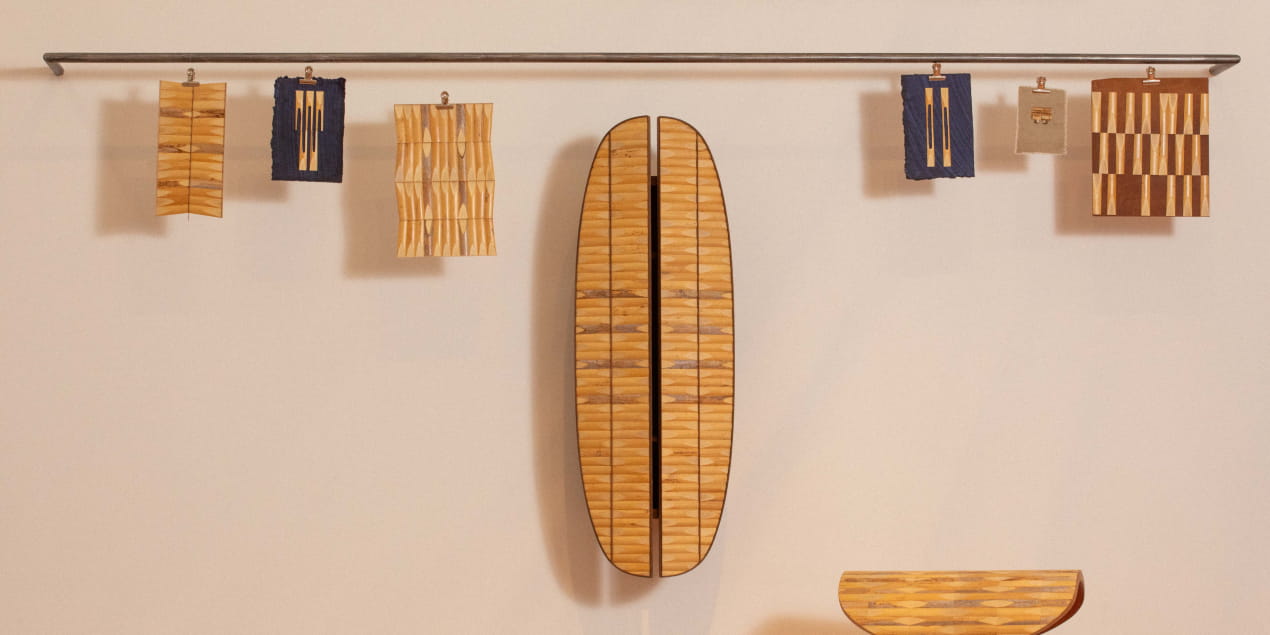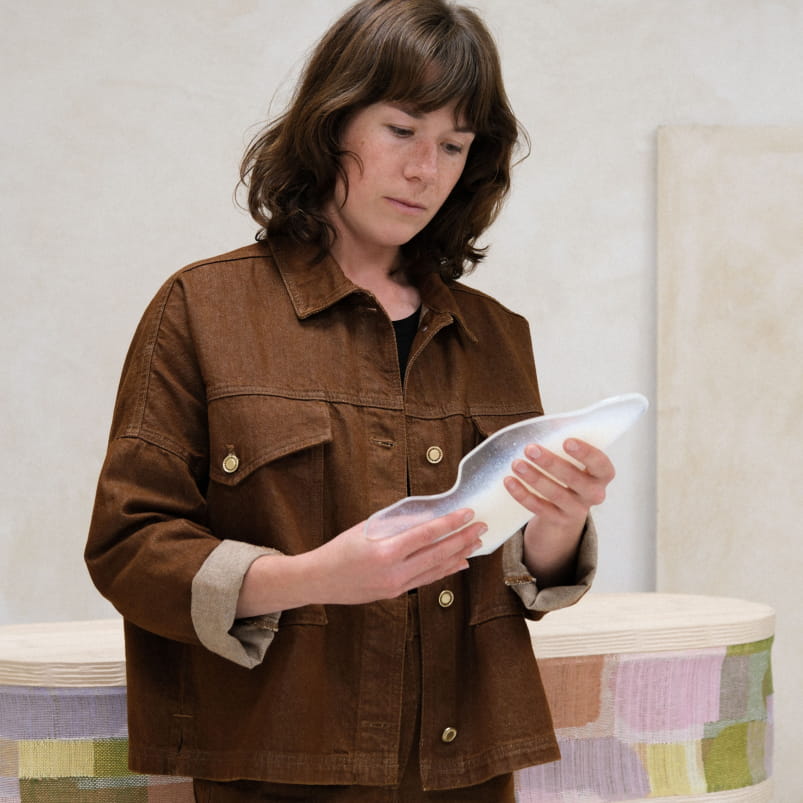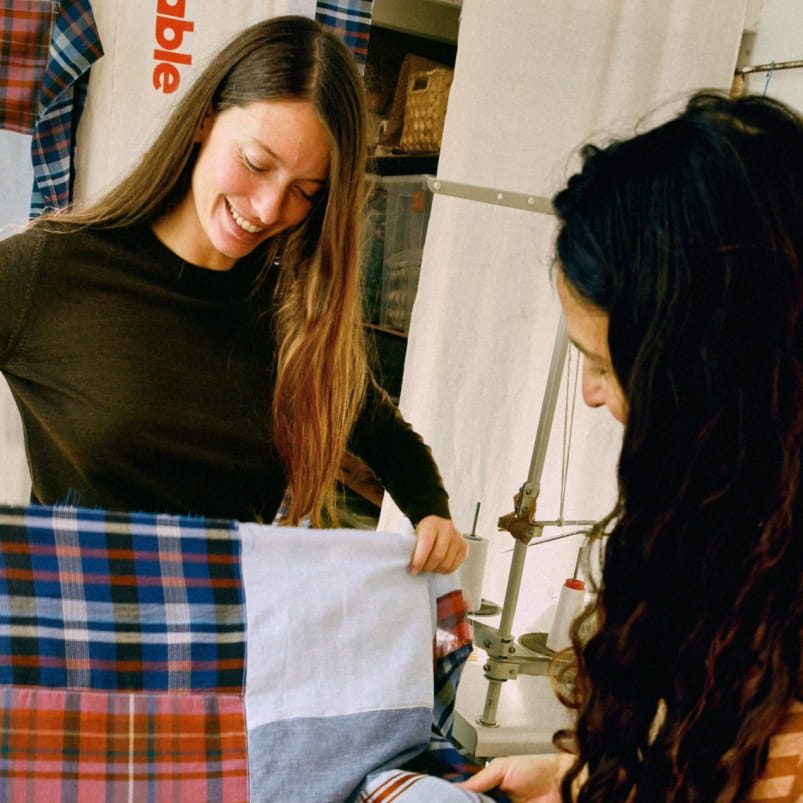Photography: Caroline Feraud
An artist designer trained between Paris and Marseille, Juliette Rougier adopts a cross disciplinary approach to design, blending art, craftsmanship, and interior architecture. Nurtured by a creative family environment, she explores the aesthetic potential of repurposing and places the Provence cane at the heart of a poetic and engaged body of work. For Sessùn Alma in Marseille, Juliette has imagined a scenography, an inspiring and graphic installation that resonates with the brand’s values, on view from May 22.
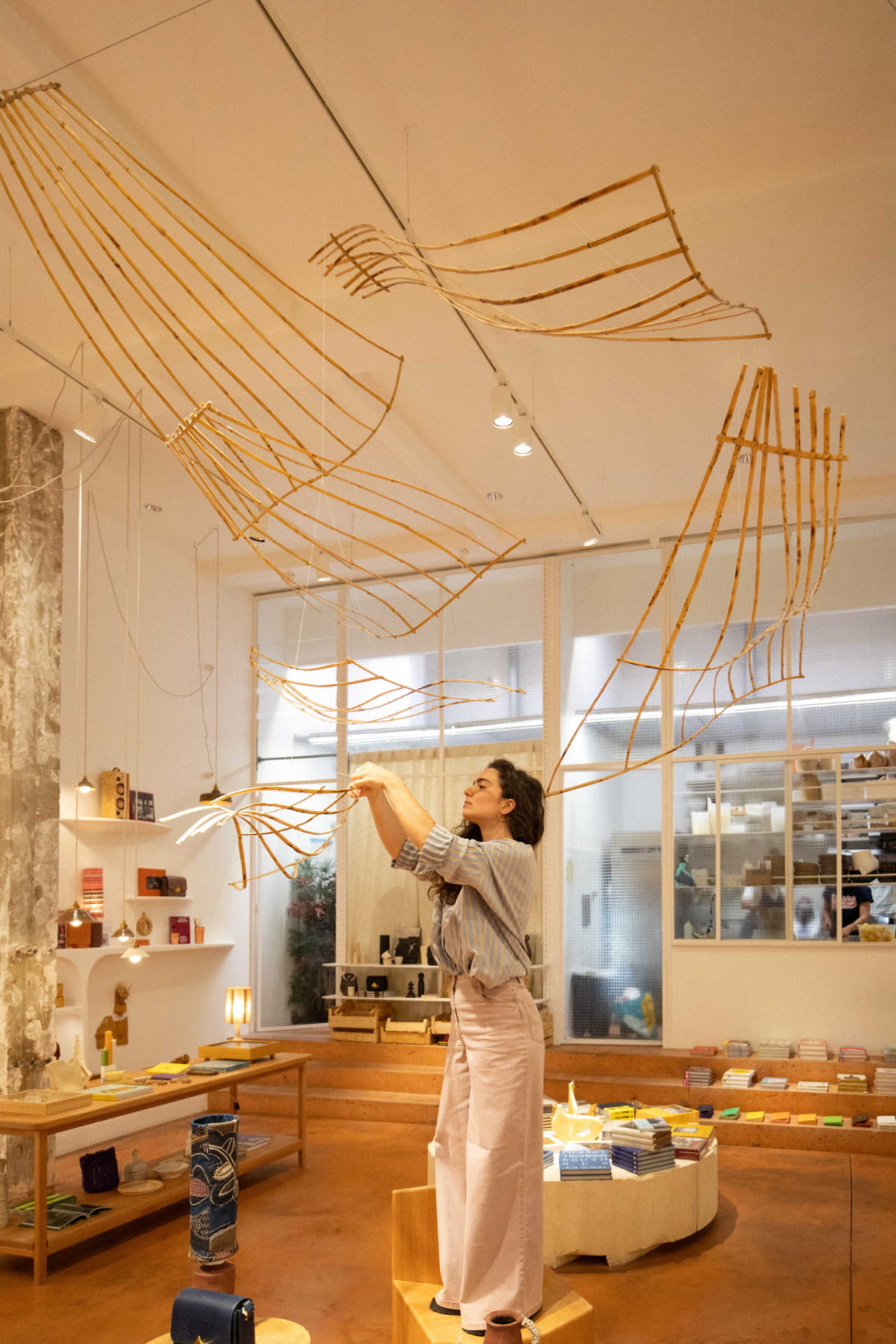
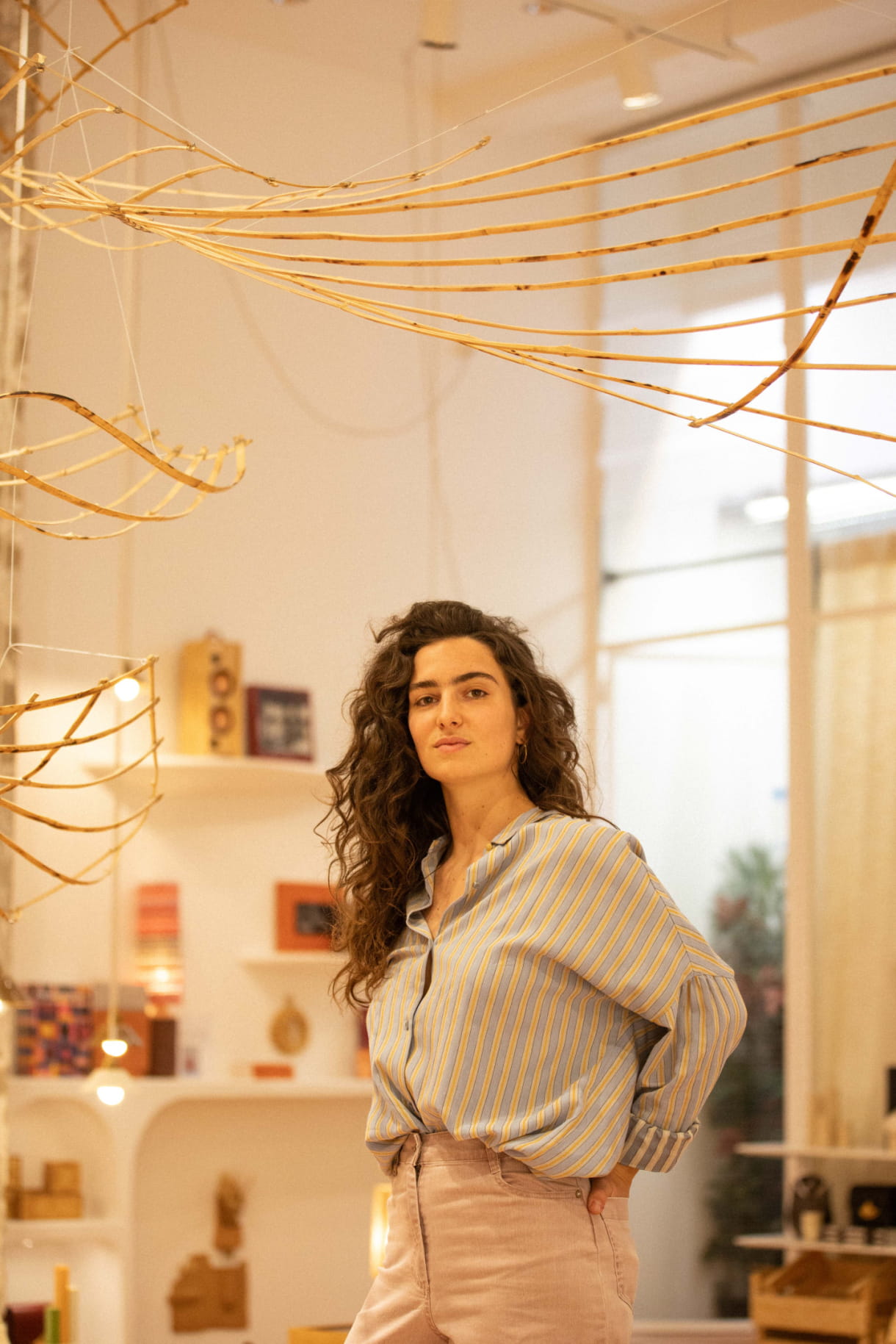
Can you tell us about your journey and how it led you to work with such a distinctive material as Provence cane?
I grew up in a creative world. My paternal grandmother painted and sculpted, and my maternal grandmother taught me foraging and crafting from a young age. Every beach walk would end with our pockets full of driftwood, destined to become sculptures or lamp bases. Their house in Brittany is filled with these creations. My mother also always made things, alongside her work as an art director in fashion, and I often drew beside her. The desire to create has never left me. It has always felt natural to be surrounded by objects and works I have made myself, to fill my home with my creations. So I naturally pursued a baccalaureate in Applied Arts, then a degree in Global Design which included interior architecture, product design, and graphic design at the Ecole Bleue in Paris. Afterwards, I completed a Master’s in Design at the Beaux Arts in Marseille. This diverse training has given me a cross disciplinary approach to design, at the intersection of design, craftsmanship, and art. When I moved to Marseille, I discovered the Provence cane, an endemic plant of the Mediterranean basin, and the craft of reed making for wind instruments that’s attached to it. Today, I collect offcuts from these workshops, reeds cut and weathered by the sun, and reimagine them, drawing on the codes of artisan crafts. My project Alto explores a new form of marquetry using these offcuts, which I now develop through projects spanning objects, architectural coverings, furniture, and scenography.
How did your collaboration with Sessùn come about, and what particularly resonates with you in the brand’s universe?
I share the values that Sessùn and its founder Emma François Grasset uphold: highlighting handcraft, the mark of the maker, raw materials, and local artists. All within a warm identity that blends the traditional and the contemporary.
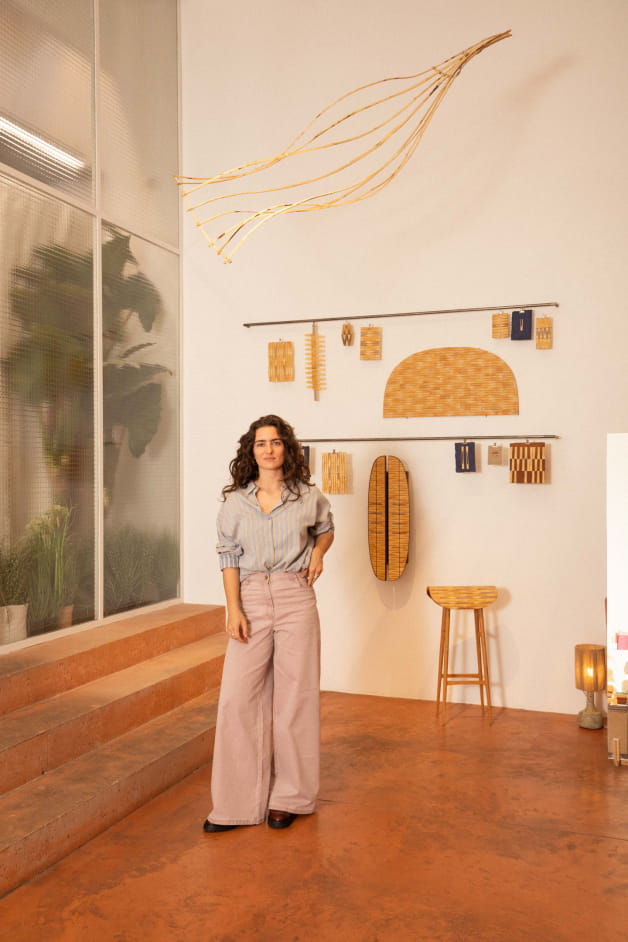
Provence cane is one of your favorite materials. What draws you to it, and why did you choose it for this scenography at Sessùn Alma?
For nearly two years, I have been working with Provence cane, focusing on creating a contemporary form of marquetry from wind instrument reed offcuts. For this scenography, I wanted to explore the cane in its entirety, beyond just the reed fragments. The canes I have used were also discarded by reed making workshops because of their imperfections. But that is precisely what I love about this material, its rough edges, the ribbing of its skin, the irregularity of its nodes. It is a living material, evolving over time and with the elements, and these irregularities are what make it so unique. Depending on how it is processed, tubular, in splints, fragments, or powder, its structural and aesthetic qualities are incredibly diverse.
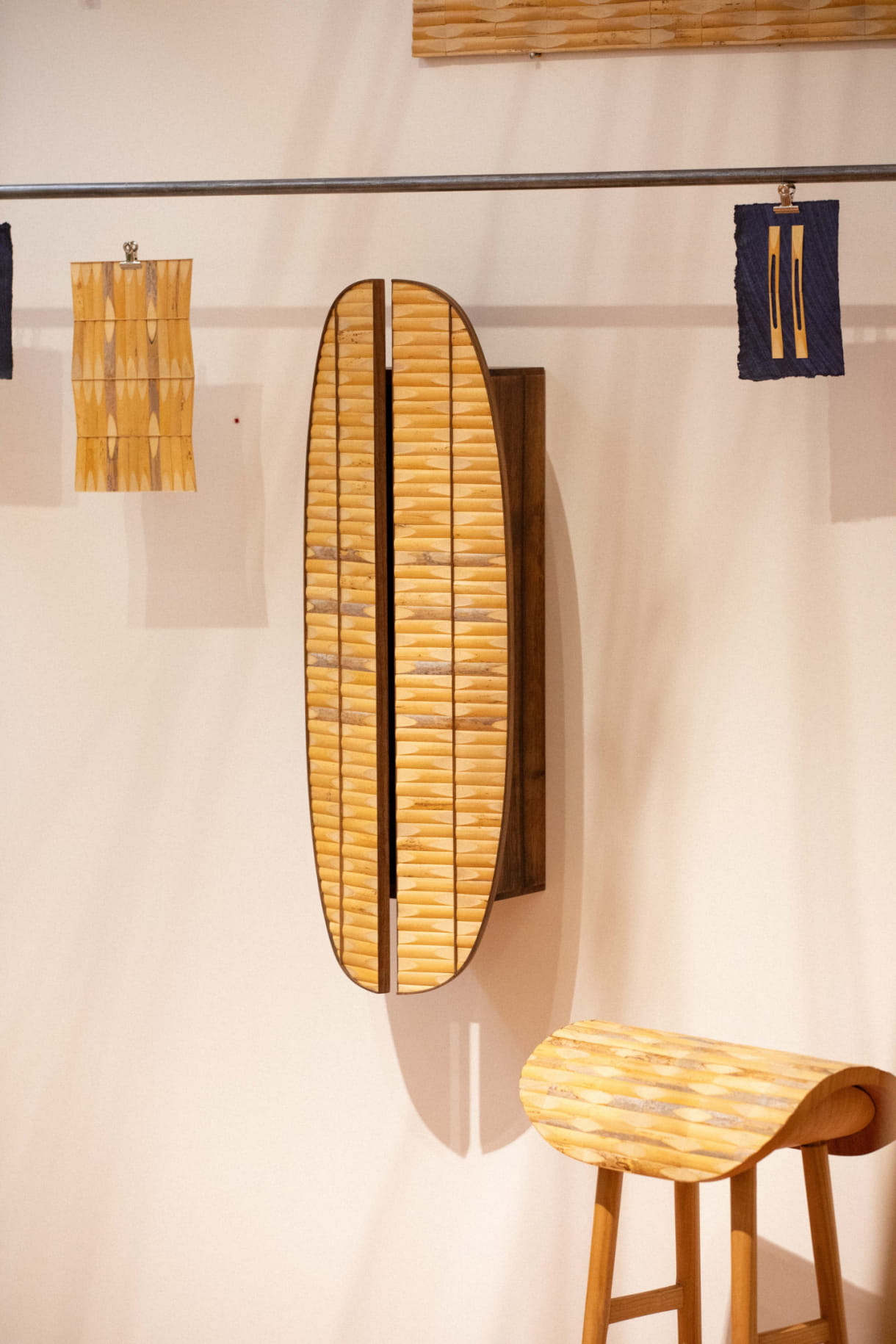

How did you envision its integration into this space? What feelings or atmospheres do you hope to evoke for visitors?
When I first visited the Sessùn Alma store, I was immediately struck by the volume of the space. I love how the restaurant entry acts as a passageway, leading into the heart of the store, a large open space with five meter high ceilings. With this scenography, I wanted to highlight that volume. My suspended structures invite visitors to look up, to observe the surrounding space in all its height, letting their gaze wander among the intertwining graphic lines. I hope it offers a moment of unexpected observation and daydreaming.
From a simple reed fragment to an object or piece of furniture, can you describe the transformation process you apply to this material?
For the Alto project, I start by sorting the reeds by size and color. Then, I assemble them in different directions, like a game, each new experiment leading to another. The final form of the object emerges from the constraints and particularities of the material, but I also give myself the freedom to play with the drawing, whatever the surface. For this scenography, I worked with whole canes. Once stripped, I prepare long splints by cutting along the grain with a knife. By humidifying them and using heat from a flame, I can shape them as I wish, creating graphic and delicate forms that balance gracefully in their curves.
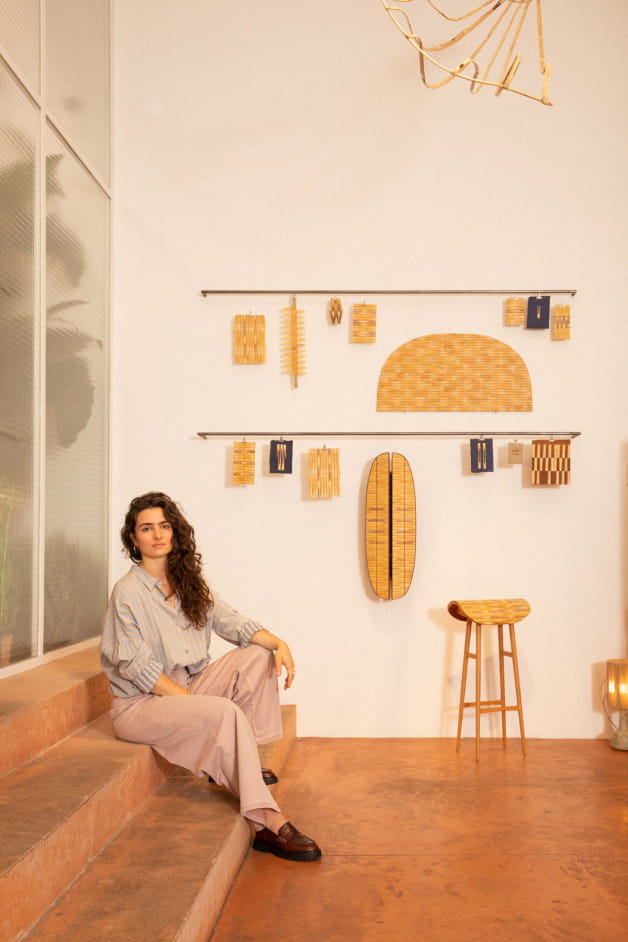
Repurposing holds a central place in your artistic practice. How does this approach influence your work, both aesthetically and ethically?
I am particularly drawn to furniture and objects that show the hand’s work and the passage of time. I have always preferred an old, chipped chest of drawers found at a flea market, with mismatched screws, to something new even if it is beautifully made. That is how I like to work with materials, keeping their raw appearance, embracing their imperfections. My inspiration comes from this relationship to their natural character, their roughness, their irregularity. Working with repurposed materials means exactly that, integrating flaws into the design, sometimes even highlighting them. That is the principle behind the cushions I designed for Ligne Roset for example, they are made from offcuts from the brand’s workshops, assembled and sewn into patchworks that change with each production cycle. This approach creates a different relationship to the product and its creation, since it evolves with what is available at the time. You cannot plan ahead, you can only work with what exists in the moment.

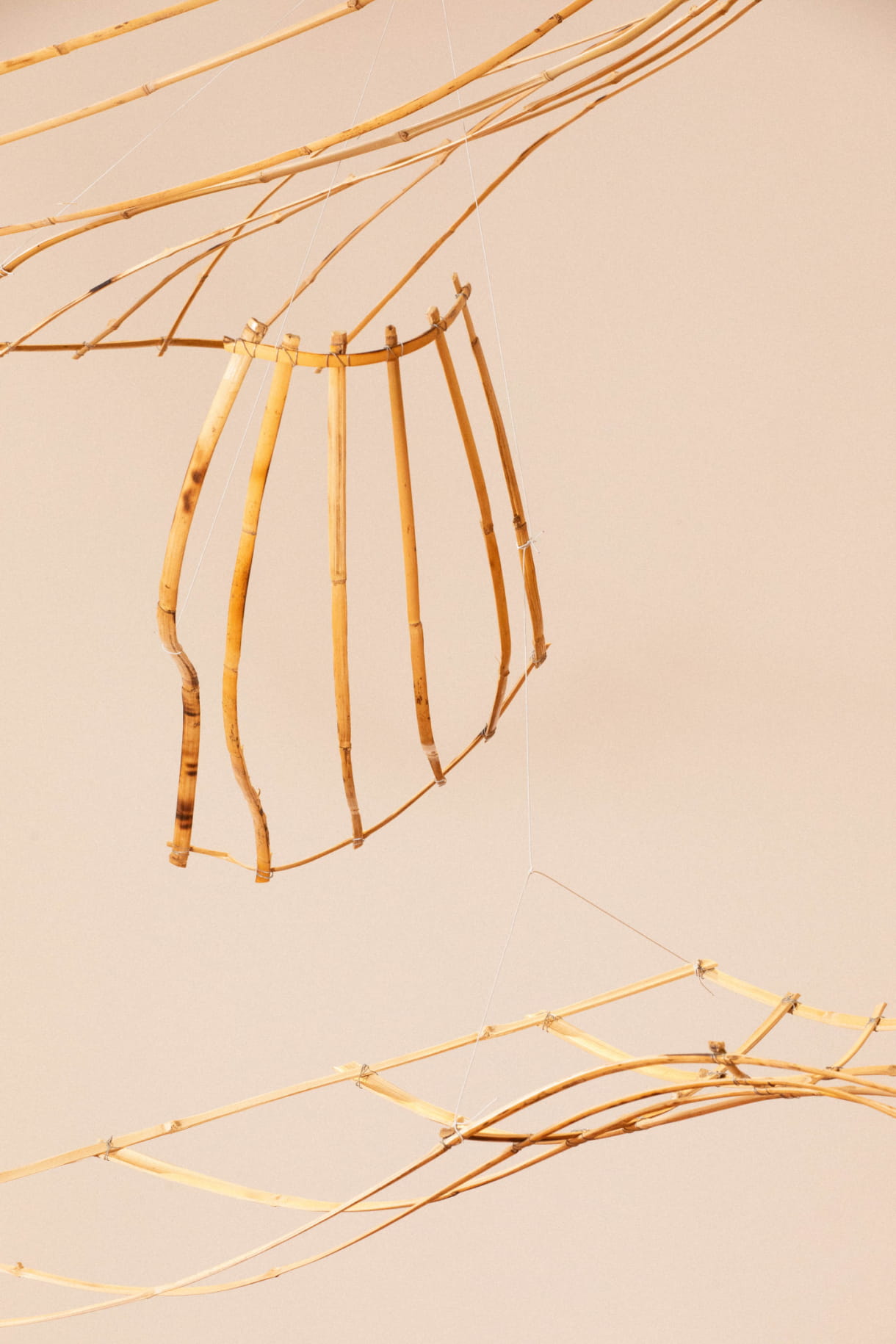
Finally, how do the traditional crafts of the Marseille region enrich your exploration of Provence cane?
Provence cane is a resilient, endemic plant of the Mediterranean basin, found not just around Marseille but across the entire Mediterranean rim. Traditionally, it has been used for everything from basketry and canisse fencing to reed pens and flutes, its uses shifting with place and era, from objects to architecture. With my first project in Provence cane, I wanted to situate my research within this continuum of existing know how, the reed making craft, while reinterpreting its codes and offering a new application, marquetry. Today, through this scenography for Sessùn in particular, I continue to expand my work with Provence cane, exploring other ways of shaping it and drawing inspiration from other regional crafts, such as wicker basket weaving.

